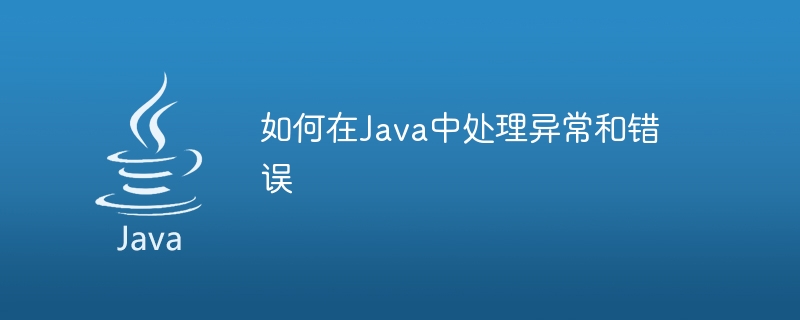

How to handle exceptions and errors in Java
In Java programming, exceptions and errors are unavoidable. They may be due to programming errors, external environment changes, or caused by other unpredictable circumstances. In order to ensure the stability and reliability of the program, we need to learn how to handle exceptions and errors correctly.
Exceptions in Java are divided into two categories: checked exceptions and unchecked exceptions. Checked exceptions are exceptions that the compiler forces programmers to handle, while unchecked exceptions are exceptions caused by runtime errors.
The following are some common exception handling techniques and sample code:
try {
// 可能抛出异常的代码块
} catch (ExceptionType1 e1) {
// 处理ExceptionType1类型的异常
} catch (ExceptionType2 e2) {
// 处理ExceptionType2类型的异常
} finally {
// 可选的finally块,用于执行一些无论异常是否发生都需要执行的代码
}public void someMethod() throws SomeException {
// 可能抛出SomeException的代码
}public class CustomException extends Exception {
// 自定义异常的构造方法
public CustomException(String message) {
super(message);
}
}try {
// 可能抛出异常的代码块
} catch (Exception e) {
// 处理异常
} finally {
// 无论异常是否发生,都会执行的代码
}try {
// 可能抛出异常的代码块
} catch (Exception e) {
throw new CustomException("Something went wrong", e);
}When handling exceptions, you also need to pay attention to the following points:
In short, exception handling in Java is an important programming skill. By rationally using mechanisms such as try-catch statements, throws statements, and custom exceptions, we can ensure that the program will not crash due to exceptions and improve the stability and reliability of the program.
The above is the detailed content of How to handle exceptions and errors in Java. For more information, please follow other related articles on the PHP Chinese website!
 How to solve 0xc000409 error
How to solve 0xc000409 error
 How to solve the WerFault.exe application error
How to solve the WerFault.exe application error
 What are the Python artificial intelligence frameworks?
What are the Python artificial intelligence frameworks?
 mobile phone screen tft
mobile phone screen tft
 NumberFormatException
NumberFormatException
 Python re module usage
Python re module usage
 Introduction to the framework used by vscode
Introduction to the framework used by vscode
 ERR_CONNECTION_REFUSED
ERR_CONNECTION_REFUSED
 The difference between vue2 and vue3 two-way binding
The difference between vue2 and vue3 two-way binding




